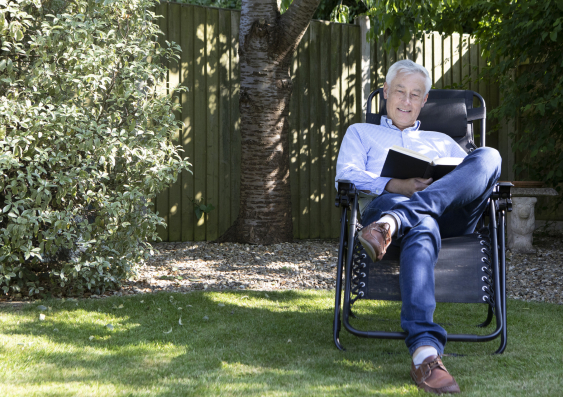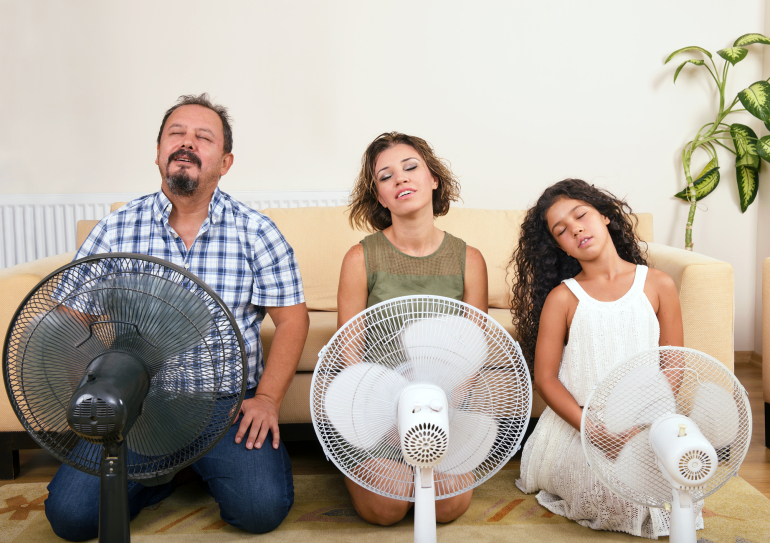Dr Negin Nazarian, from the School of Built Environment at UNSW, is an expert in urban heat. We asked her how the science behind urban heat research could help us keep our homes (and therefore ourselves) cooler over summer.
1. Insulation, shades and blinds can keep things cooler
“On a hot sunny day, the winning strategy is to stop the heat from getting into your space,” says Dr Nazarian. “Cooling is harder once your home has heated up. In the urban environment, any way that radiant heat from the sun can be prevented from being absorbed by surfaces or heating a space is key to keeping cool in the face of high temperatures. In urban environments this looks like designing buildings using effective insulating materials, orienting larger windows to be north rather than west facing, using awnings or shades that can be adjusted, and ensuring windows are double glazed, tinted or shaded to prevent radiant heat getting into the space.” The Australian Government’s Guide to Environmentally Sustainable Homes says up to 87 per cent of a home’s heat is gained through windows, so improving the thermal performance of windows is a great way to keep cooler.
Take home tips:
- Blinds, shutters and awnings can all stop heat from entering your home, so keep them drawn when the sun is hitting them. Remember to close them before you leave the house, if you won’t be home at the hottest part of the day!
- Proper insulation doesn’t only keep your home warm in winter; it also keeps it cool in summer by trapping cool air inside. Insulate your roof and walls and floors if possible to prevent heat transfer.
- Upgrade your windows to better insulate your home.
- You can also use reflective window films to reduce solar heat gain significantly by blocking the sun’s heat.

Double-glazed windows, curtains and shades stop radiant heat getting into your home. Up to 87 per cent of a home's heat is gained through windows so if you can improve the thermal performance of your windows you will keep your home cooler. Photo: Getty Images.
2. Make use of natural ventilation
“When looking at heat mitigation in urban settings one of the factors that can help lower temperatures and keep people cooler is planning settings that ensure buildings are oriented to take advantage of breezes that come from the ocean, or ponds, dams and lakes. Another is to ensure there is space between buildings to allow for ventilation which moves heat out of the urban environment,” says Dr Nazarian. “Now, while you can’t change the location of your home to catch the ocean breeze, you can certainly try to create avenues for air to pass through. This means when you open a window, open a door and a window on the other side of your home too, to create cross-ventilation and allow air to move through your home.”
Take home tip:
Take advantage of any cool breezes during the early mornings, evenings and overnight. Open windows on opposite sides of your home to create cross-ventilation. This allows fresh air to flow through and hot air to escape. And when the wind is hot, close those windows to keep cooler air trapped in the house if possible. You can also check the weather stripping on doors and windows to keep the cool air in.
Read more: 5 ways to cool cities as temperatures soar
3. Become a fan of fans
“Air-conditioning is a very popular way to cool homes, but it also has some downsides in terms of the energy used to run it and the heat it creates,” says Dr Nazarian. “Indoor fans are relatively energy-efficient and make a room feel cooler by circulating air – much like ventilation does. In fact, recent research shows that fans can be effective at keeping people cool even at temperatures as high as 40 degrees. Interestingly, some cities use misting technology to cool people, and there are also misting fans and evaporative coolers that people could use in their homes,” she says. A note of warning though: “Misting options only work in hot and dry conditions, and if you use them in humid areas the water droplets can actually have a negative impact on heat stress as they reduce the body’s ability to cool itself through sweating.”
Take home tip:
Don’t go straight to the big guns of air-conditioning when you want to keep cool. Use fans to circulate air in rooms in your home. Portable fans, such as floor or table fans, can be really effective and you can move them around the house to provide direct cooling where you need it most.

Make the most of the trees you have access to, and plant more if you can. Green spaces mitigate the effects of heat. Photo: Getty Images.
4. Embrace green – and blue – spaces
“Increasing both green and blue infrastructure is an important part of creating cities that can mitigate the effects of increasing temperatures in the face of global climate change,” says Dr Nazarian. “In cities this can look like establishing parks and planting lots of trees and adding lakes or dams to the landscape too. While trees and parks can’t reduce rising temperatures, they can make them easier for people to endure, as they provide shade and respite from heat. And the same ideas can be adapted on a smaller scale in your back garden or streetscape.”
If you live in a house, plant trees and shrubs strategically around your home, especially on the north and west sides. The natural shade they will create can help reduce indoor temperatures.
“Though you might need to wait a few years to feel the benefit, they are an important investment in your future,” says Dr Nazarian. “Deciduous trees are excellent choices because they provide shade in summer and allow sunlight through in winter when their leaves fall. And if you don’t have access to a back garden, you could be part of creating verge gardens or urban forests in your neighbourhood to increase the green space you have access to.
“As for blue infrastructure, making the most of pools, lakes, streams, the ocean and even cool baths, are great ways to cool down when the weather is hot.”
Take home tips:
- Make the most of the trees you have access to and plant more if you can.
- Add plants and water features to your garden spaces if you can. The evaporation from water features can cool surrounding areas.
- Reduce the amount of concrete or paved areas in your yard, natural ground cover stays cooler.
- Though lawns are popular, and cooler than paving, consider native vegetation options which require less water and are better adapted to the local climate. In fact, anti-lawn movements are gaining momentum for environmental reasons.
- Avoid fake turf, it gets very hot in summer and releases microplastics into the environment through wear and tear.
Read more: Tiny pocket parks make a big impact on urban living
5. Habits that keep you cooler
“Using light colours in the built environment is one of the tactics used to reduce heat in cities. Some examples include light coloured roofing and paints engineered to reflect light away from buildings so less is absorbed as heat,” says Dr Nazarian.
“The same idea can be applied to what you wear to keep cool. Lighter colours reflect heat, and looser clothing allows air to circulate around your body to move heat away.
“Researchers are also always seeking ways to reduce the heat created by human activity. So, the same can apply at home. Think about what creates heat in your home and do less of it. The summer barbecue is your friend, as cooking outside means you’re not heating your home at the same time. Though if you’re in the middle of a heatwave, avoid being outside if you can.”
And make sure you stay hydrated, says Dr Nazarian. “And, my last tip, cold water is more effective at keeping you cool than water at room temperature!”
Take home tips:
- Be like a climate smart building and choose to clothe yourself in light coloured clothing which reflects rather than absorbs heat.
- Reduce the heat in your home by turning off lights, computers and other heat-generating appliances when not in use. (Using energy-efficient LED light bulbs which emit less heat than incandescent bulbs can make a small difference too.)
